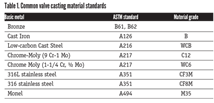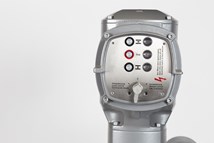What Makes a Company Best in Class?
Just about everyone is familiar with the term Operational Excellence (OpX), but what exactly is it and how can it be achieved?
Essential to OpX, according to a report from the Aberdeen Group, is the use of technology to gather information from all parts of the enterprise in real time. The report, Operational Excellence in the Process Industries: Driving Performance through Real-Time Visibility, says that "Best-in-Class companies provide visibility into manufacturing operations while using real-time interoperability between manufacturing systems and business systems." According to Aberdeen's research this includes "interoperability between Manufacturing Execution Systems (MES) and other enterprise systems such as Product Lifecycle Management (PLM) ...; Enterprise Resource Planning (ERP) ... ; and Supply Chain Management (SCM)." And access to information extends all the way down to individual intelligent field devices like smart valves and digital process transmitters, which can provide both insight into processes and data for asset management.
But simply having access to the information is not enough, the report continues. The way information from plant automation systems - "Distributed Control Systems (DCS) and Human Machine Interface / Supervisory Control and Data Acquisition (HMI / SCADA) are used in conjunction with data historians to control product flow in the plant" - are just as important as the technology. An ideal system integrates manufacturing processes, procedures, documentation, training and equipment. Integration of manufacturing and MES makes it easy to pass information and scheduling between layers and eliminates a large number of paper-based activities involved in record-keeping. This is valuable in any industry, but in those requiring certification, such as pharmaceuticals, it is vital, and rationalization can pay enormous dividends.
Results of operational excellence
For the companies that do it right the results are impressive, according to the Aberdeen report. Best-in-class manufacturers averaged 99% manufacturing schedule compliance (defined in the report as percentage of work completed per schedule); 99% perfect orders (100% complete and on time with no errors); 97% overall yield (actual yield/theoretical yield); and 94% overall equipment effectiveness (availability x performance x quality).
Getting management buy-in
Operational excellence involves all parts of the enterprise, and for that reason must be driven from the top. It is not enough for one department to decide to adopt best practices (although it certainly can't hurt, and may even serve to inspire others); all parts of the company must work together. But how to get everyone involved?
One of the first steps in gaining organizational support is to get at least one person at the executive level to act as a sponsor. It is better to have more levels of management involved, and giving strategically-chosen managers a stake in the success of the project can make things go much more smoothly.
Once sponsorship and management buy-in have been achieved, it's time for planning: look at the current situation in the company, find the best opportunities for improvement, figure out what things will be if those opportunities are grasped, and start setting out a plan. Then build the project using a modular approach. There are plenty of companies that can provide input and advice from experts, and it is a good idea to get at least one consultant to help with the effort - if for no other reason than the complexity of the effort.
Don't forget the people
It's important to remember that OpX is not a single magic bullet, but a pervasive attitude and a way of doing business. And it affects all parts of the company: production, maintenance, sales & service, quality, warehousing & distribution, regulatory compliance, raw materials and R&D. It is not just about automation and the flow of information among computerized systems. Plants and their systems are designed, built and operated by people, and if the people are not properly trained the OpX effort cannot succeed. The abstract of the American Society for Quality (ASQ) paper How to Achieve Operational Excellence points out that "Quality improvement systems can contribute to operational improvements, but they cannot eliminate operational costs arising from deviations and nonconformances caused by human error ... To achieve the key goals of operational excellence, management must establish requirements that are clear and appropriate for their intended purpose. The second step is to communicate these requirements to employees through meetings and training sessions. To ensure compliance with communicated requirements, continuous assessment is needed to determine compliance levels, verify actual practices, and test the requirements' effectiveness."
The final payoff
The Aberdeen report concludes with a list of actions to be taken by the three classes of companies it identifies: best-in-class, industry average and laggards. For the laggards the actions are pretty basic: standardize the measurement of key performance indicators across the enterprise, use DCSs and HMI/SCADA to achieve system-wide control and make full use of the available data, and use control loop diagnostics and automated controls to improve operations. For industry average companies, the steps are to use cross-functional continuous improvement teams to improve both operational and corporate performance, use energy conservation in manufacturing as a KPI, and use loop tuning software and adaptive control.
For best-in-class companies the tasks are more refinements to an already successful plan: keep on with cross-functional teams and follow through on the use of energy consumption as a KPI.
Bibliography
Adkins, Michalle. "Operational Excellence Begins Here," Chemical Engineering, March 2007
Adkins, Achieving Operational Excellence and Organizational Quality. Emerson Global Users Exchange, 2008
Bigelow, Madeline. How to Achieve Operational Excellence. The American Society for Quality, 2002
Fonzi, David. Operational Excellence in the Process Industries: Driving Performance Through Real-Time Visibility. Aberdeen Group, September, 2008
Operational Excellence: Transforming Pharmaceutical Manufacturing in Your Own Enterprise. Emerson Process Management, 2004.
RELATED CONTENT
-
Piping Codes and Valve Standards
As with every intended use for valves, piping carries its own set of standards that valve companies and users need to understand.
-
Grappling with the World's Complex Energy Transition Through an ESG Lens
With a long list of contributing factors, the world is barreling headlong into an energy transition that’s full of challenges, opportunities and lofty net-zero goals.
-
Process Instrumentation in Oil and Gas
Process instrumentation is an integral part of any process industry because it allows real time measurement and control of process variables such as levels, flow, pressure, temperature, pH and humidity.










 Unloading large gate valve.jpg;maxWidth=214)